
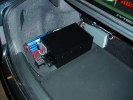
Police services, toll roads, traffic departments and corporate installations are all actively seeking ANPR solutions that work. Unfortunately, the sales pitch often seems to be: our system works, is cheaper than the others and is the only system that can do the job. What is the reality here and what can we expect from ANPR to give us an answer to the problems posed on South African roads today?
History
ANPR (automatic number plate recognition) also known as LPR (licence plate recognition) and ALPR (automatic LPR) came about in the early 1990s. An extremely large bomb was planted by the IRA in the centre of London and exploded on a Sunday morning with the death of one person; it was fortunate that it was not a working day as casualties would have been greater than those of The World Trade Centre Towers in New York! As a result, the British Government tasked leading corporations to come up with some solutions to prevent similar incidents. The first commercial system was sold by Racal in 1994 and by 1996 the largest counter terrorism ANPR was operational in the UK. By 1999 all 43 of the British Police Forces were equipped with ANPR systems and by 2002 other police forces around the world started to utilise ANPR within their policing roles. Racal was bought by Thales in 2001 and became Thompson CSF spinning off its ANPR division into a new company - Appian Technology. Vision Catcher is the distributor and agent for Appian Technology in southern Africa.
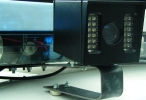
What is ANPR?
ANPR in simple terms is the ability to grab the alphanumeric characters from a number plate, provide a clear read and interface that read to a computer allowing a manual or automatic correlation against multiple databases either locally or on a national basis. There are really two ways of enacting this plate grab; the simplest is completing an OCR read for each letter/number across the plate (similar to how a fax will read data) and providing an approximation of what each number/letter is. The second and more sophisticated route is to apply a neural network that allows progressive understanding of each plate and a far more reliable read, this starts with defining a plate and then applying rules to the content of the plate to break down the alphanumeric details, thus removing the background clutter of provincial insignia, mealies, elephants and other detail we see on our South African plates. The difference between the two methods is that the random OCR read does not take into account angles and skews often being baffled by the background clutter and thus producing an inaccurate read, while the neural network, once fully trained, will give accuracies up to 97% or more in all conditions. The first method by its very nature is simpler and cheaper, but experience has shown, fails to give the true standards required for effective ANPR success.
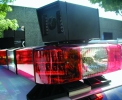
Case study
Appian Technology's ANPR system known as Talon was chosen as the first fixed site testing facility in Northampton in 2001. Within days of its deployment the system proved its worth. A vehicle was stolen in Taunton, Somerset (South West England) at 10h45 during the course of a high-tech burglary. A police notice was immediately filed on the police database requesting all police forces to stop the vehicle on site. At 14h00 the same vehicle went through the Northampton ANPR deployment and activated an immediate alarm alerting the police services with full details regarding the theft of the vehicle. Northampton is situated in the British Midlands near Birmingham and Coventry, some four hours or more away from Taunton driving at the normal speed limit! The police launched their ANPR intercept team, part of the Northampton test facility, and by 14h02 the vehicle was stopped and the suspects arrested.
The Talon system utilised the Spectrum interface to provide a continuous link to all key databases including the Drivers Vehicle Licensing Authority in Swansea (similar to our NaTIS system) and to all police databases. The test study ran initially for one year with 1,5% of all vehicles passing through the system matching at least one alarm trigger on the databases. The intercept team in this one year stopped 3591 vehicles and made 601 arrests made up of:
145 for automobile crimes (25%).
66 for other crimes (28%).
200 for driving while disqualified (30%).
89 for persons circulated as wanted.
The team detected 1962 offences of unlicensed vehicles, issued 2372 document violation tickets, 118 vehicle defect forms, conducted 95 stop searches, submitted 1711 intelligence loggings and prosecuted 255 other traffic offences. The team cost R2,5 million to run and returned R2,8 million to the Government, with an arrest rate 12 times the national average per police officer. As a result the 'denying criminals the use of roads' project was presented to Government, signed and passed within three months - unheard of in Government circles!
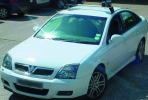
Local solutions
Experience from running the City of London Congestion Charge, working in close liaison with Californian State Police and LA Police Department, Malaysian Toll Roads Authority, numerous other police and law enforcement agencies as well as many other corporate and Government institutions have provided Appian and Vision Catcher with a clear understanding of the pitfalls and solutions for ANPR. Many local attempts to provide working ANPR models within parking areas, traffic monitoring, restricted red lane usage, have failed because of a lack of understanding for the frame grabbing cameras and then the processing of the captured plate.
Vision Catcher's Talon and Spectrum solutions provide accuracy of 95% or more on all provincial plates including personalised plates in all lighting conditions on a 24 hour basis.
Applications include the targeting of unlicensed vehicles; unroadworthy vehicles; outstanding warrants; time over distance for speed enforcement; hotlists of those vehicles stolen and used in crime; uninsured vehicles; and people driving while disqualified/suspended.
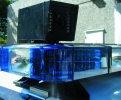
Conclusion
Appian Technology has its own dedicated research and development team allowing solution provision with fine tuning to get to the success rates required for accurate plate reading. Recent market use has seen a 97% success rate on vehicles travelling at up to 240 km per hour. Vision Catcher has started rolling out the Talon systems in southern Africa.
For more information contact Niall Beazley, Vision Catcher, 011 463 9797, [email protected] or visit www.visioncatcher.co.za

© Technews Publishing (Pty) Ltd. | All Rights Reserved.